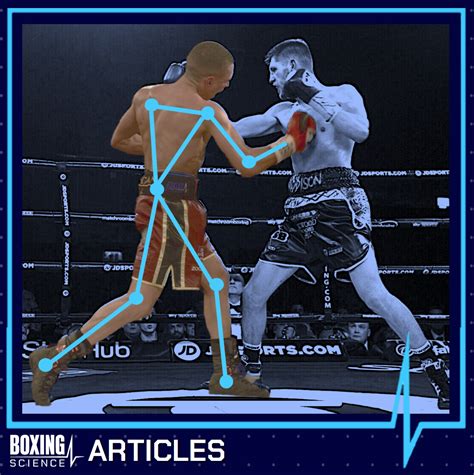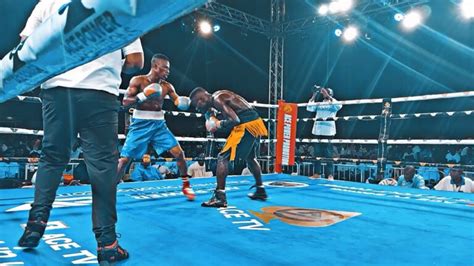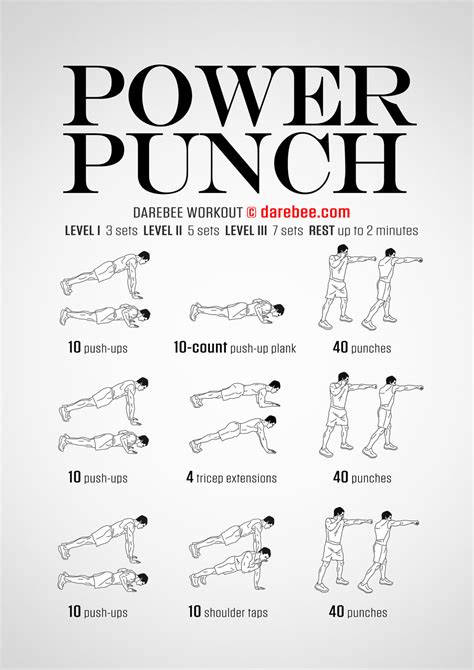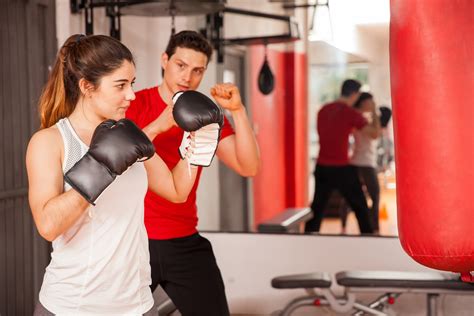Explore the science behind knockout punches, including mechanics, speed, technique, and training tips to enhance your striking effectiveness in combat sports.The Science Behind A Knockout Punch
In the world of combat sports, the knockout punch reigns supreme as a decisive moment that can turn the tide of a match in an instant. But what exactly makes a punch capable of rendering an opponent unconscious? This article delves into the intricate science behind delivering a powerful knockout punch, exploring its underlying mechanics, the critical role of speed and velocity, and how refined technique can enhance its effectiveness. We’ll also examine the surprisingly complex science of impact, highlighting the force a punch generates and its effects on an opponent. Whether you’re a seasoned boxer or a curious enthusiast, understanding these elements not only enhances your appreciation for the sport but also equips you with the knowledge needed to train your body effectively. Join us as we unravel the fascinating interplay of physics, technique, and training in the art of the knockout punch.
Understanding The Mechanics Of A Knockout Punch
The mechanics behind a knockout punch are intricate and involve various components that combine to deliver maximum power and efficiency. Understanding this science requires examining three primary factors: body alignment, weight transfer, and the rotation of the hips and shoulders.
When delivering a knockout punch, proper technique is crucial. It begins with the feet, where a solid stance allows for optimal weight distribution. This alignment sends kinetic energy up through the body, leading to a more powerful strike. Athletes must focus on their footwork, ensuring that they are grounded while still being agile enough to adjust their positioning as necessary.
Next, the weight transfer is significant. A punch should not come solely from the arm; instead, it should involve the entire body. As the punch is thrown, the fighter shifts weight from the back foot to the front foot, creating momentum. This momentum is critical as it adds force to the punch itself, enhancing its potential to deliver a knockout.
Moreover, the core plays an essential role in effective punching. The rotation of the hips and shoulders is key to generating power. As the hips pivot, the torso follows through, unleashing a whip-like motion that maximizes speed and impact. This coordinated movement transforms a simple jab or hook into a devastating blow.
| Component | Description |
|---|---|
| Body Alignment | Proper stance and positioning to facilitate movement and power transfer. |
| Weight Transfer | Shifting weight during the punch to generate additional force and momentum. |
| Hip and Shoulder Rotation | Utilizing core strength to enhance punch speed and power through body rotation. |
By mastering these mechanics, boxers and martial artists can improve their striking ability and increase their chances of delivering a knockout punch. The science behind effective punching is not merely about brute strength; it involves finesse and understanding the physical laws that govern our movements.
The Role Of Speed And Velocity In Knockout Power
The velocity and speed at which a punch is delivered play a critical role in enhancing its knockout potential. In the realm of boxing and martial arts, understanding this aspect of The Science behind a knockout punch can drastically improve a fighter’s effectiveness in the ring.
Speed is defined as the distance a punch travels over a given time, while velocity includes both speed and direction. When it comes to delivering a knockout punch, both factors are essential. A faster punch generally generates more kinetic energy, which is a key contributor to the force applied during impact.
| Factor | Impact on Knockout Power |
|---|---|
| Speed | Higher speed increases the kinetic energy of the punch, resulting in a more forceful impact. |
| Velocity | Maintaining optimal velocity ensures that the punch strikes the target effectively without sacrificing technique. |
| Technique | Combining speed and proper technique maximizes the effectiveness of the punch, ensuring minimal energy loss. |
To maximize the effectiveness of a knockout punch, fighters should focus on improving their speed through targeted training. This can include practices such as:
- Timing drills to enhance reflexes.
- Shadow boxing at high intensity to develop speed without sacrificing form.
- Utilizing resistance training to build explosive strength.
The role of speed and velocity in delivering a knockout punch cannot be understated. By honing these skills, alongside proper technique, fighters can significantly increase their chances of success in the ring. Understanding The Science of movement and impact is essential for anyone looking to elevate their performance in combat sports.
How Technique Influences The Effectiveness Of The Science
In the realm of combat sports, technique is paramount. While strength and speed undoubtedly contribute to a powerful punch, the science behind delivering a knockout blow is heavily grounded in the application of proper technique. A well-executed punch requires more than mere force; it demands an understanding of body mechanics and optimal movement patterns.
Firstly, when we consider the mechanics of a punch, the alignment of the body plays a crucial role. A punch delivered with proper technique allows the energy generated from the legs and core to travel through to the fist. This kinetic chain efficiency means that less physical strength is required to produce greater impact, enhancing the punch’s effectiveness.
Secondly, footwork is integral to successful punching technique. Proper positioning can significantly increase the power behind a punch. When a fighter is in the right stance and utilizing their footwork effectively, they can pivot, shift weight, and generate momentum, all of which contribute to the devastating impact associated with a knockout punch.
Additionally, factors such as timing and target accuracy are essential components of effective punching technique. A well-timed punch that lands on a vulnerable spot can maximize its impact, regardless of size or strength. Understanding how to exploit an opponent’s openings after analyzing their movements showcases the importance of tactical skill in executing a punch that aligns with the science of force application.
The influence of technique on the effectiveness of a knockout punch highlights the need for fighters to focus on honing their skills. Through the mastery of various techniques, athletes can ensure not just power, but also precision and effectiveness in their strikes, making the science of delivering a knockout punch a multifaceted discipline.
The Science Of Impact: Force And Its Effects On Opponents
When discussing The Science behind a knockout punch, one cannot underestimate the significance of impact force. Impact force is the result of the speed of the punch, the weight of the fighter’s hand, and the rigidity of the material hitting the target. Understanding this, we can quantify how these elements interact to produce a knockout effect.
The force exerted during a punch can be calculated using the formula: Force = Mass x Acceleration. Here, the mass refers to the weight of the fist and arm, while acceleration details how quickly the punch is thrown. Boxers and martial artists focus on both factors during their training to maximize the effectiveness of their strikes.
Another important aspect of The Science of impact is the area over which that force is distributed. A smaller impact area, such as the knuckles, creates a higher pressure on the opponent’s body compared to a flat surface. This is why hitting with precision and aiming for vulnerable areas can lead to a more effective knockout punch.
The rapid transfer of energy during impact causes a temporary disruption in the opponent’s nervous system, which can lead to a knockout. This is often seen when the punch lands on the chin or temple, causing a rapid rotational movement of the head that the brain cannot withstand, resulting in unconsciousness.
The science of impact focuses on several critical factors—force, area of impact, and energy transfer—that together create a knockout punch. Understanding these principles helps fighters refine their techniques, ultimately aiming to harness their strengths in delivering an effective strike.
Training Your Body To Deliver A Knockout Punch Effectively
Training your body to deliver a knockout punch effectively requires a combination of strength, speed, and technique. It is essential to understand that The Science behind producing a powerful punch is not solely about brute force; it also involves conditioning your body and practicing specific techniques to maximize impact.
Here are some key components to consider in your training regimen:
| Training Component | Description | Benefits |
|---|---|---|
| Strength Training | Focus on building muscle strength in your arms, shoulders, and core. | Increases punching power and stability. |
| Speed Drills | Incorporate plyometrics and agility drills to enhance speed. | Improves reaction time and the ability to throw punches quickly. |
| Shadow Boxing | Practice your punches in the air while focusing on form and technique. | Enhances muscle memory and footwork. |
| Heavy Bag Training | Punch a heavy bag to build power and practice technique. | Simulates real-world impact and develops endurance. |
| Pad Work | Work with a partner to practice striking on pads. | Improves accuracy and timing. |
| Conditioning Exercises | Engage in cardiovascular workouts like running or cycling. | Boosts overall fitness, increasing stamina during fights. |
Additionally, it’s crucial to focus on flexibility and overall body mechanics to ensure that your body can move efficiently. Techniques such as yoga or dynamic stretching can help improve your range of motion, which is vital in maximizing the effectiveness of your punches. Moreover, ensuring proper nutrition and recovery is essential to support your training goals.
The Science suggests that successful knockout punches stem from not just one single factor but from the above elements working together in harmony. Continuous practice and improvement will enhance your abilities, ensuring you’re more than prepared when it comes time to deliver that decisive blow.
Frequently Asked Questions
What is a knockout punch?
A knockout punch is a powerful strike that renders an opponent unable to continue the fight, typically causing a loss of consciousness.
How is the force of a knockout punch calculated?
The force of a knockout punch can be calculated using the formula for kinetic energy, which involves the mass of the puncher’s fist and the velocity at which it strikes the opponent.
What biological factors contribute to a knockout punch?
Biological factors include the structure of the skull and brain, which can be susceptible to concussive forces, as well as individual factors like muscle strength and technique.
Does technique matter in delivering a knockout punch?
Yes, technique is crucial; proper body alignment, weight transfer, and timing can significantly enhance the effectiveness of a punch.
Are there different types of punches that can achieve a knockout?
Yes, punches such as the hook, uppercut, and straight punch can all lead to a knockout, depending on placement and force.
What role does training play in delivering a knockout punch?
Training improves a boxer’s strength, speed, and technique, allowing them to generate greater power and accuracy in their punches.
Can anyone learn to deliver a knockout punch?
While anyone can learn to throw powerful punches through technique and training, genetic factors also play a role in physical capabilities and knockout potential.









